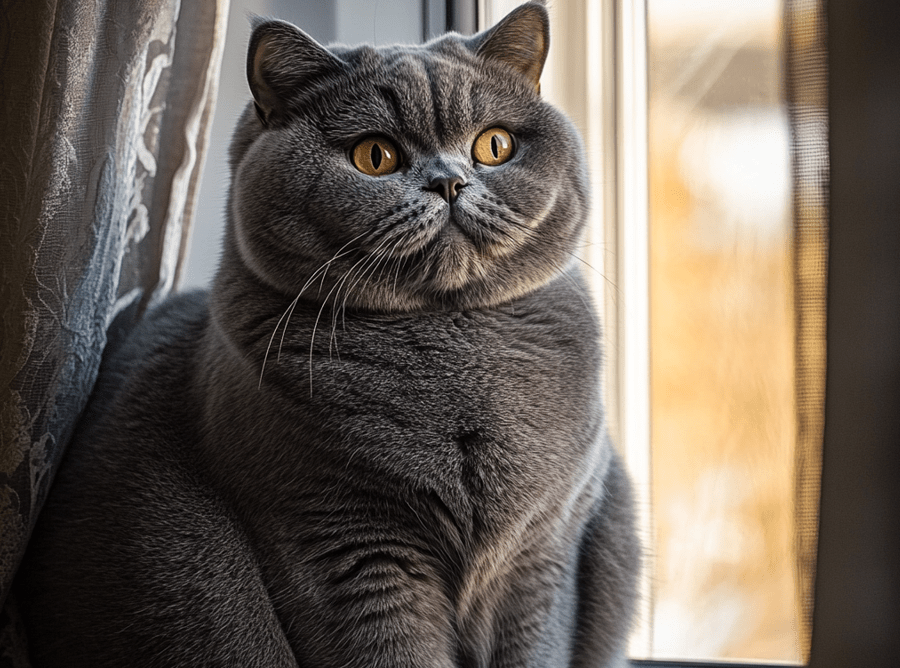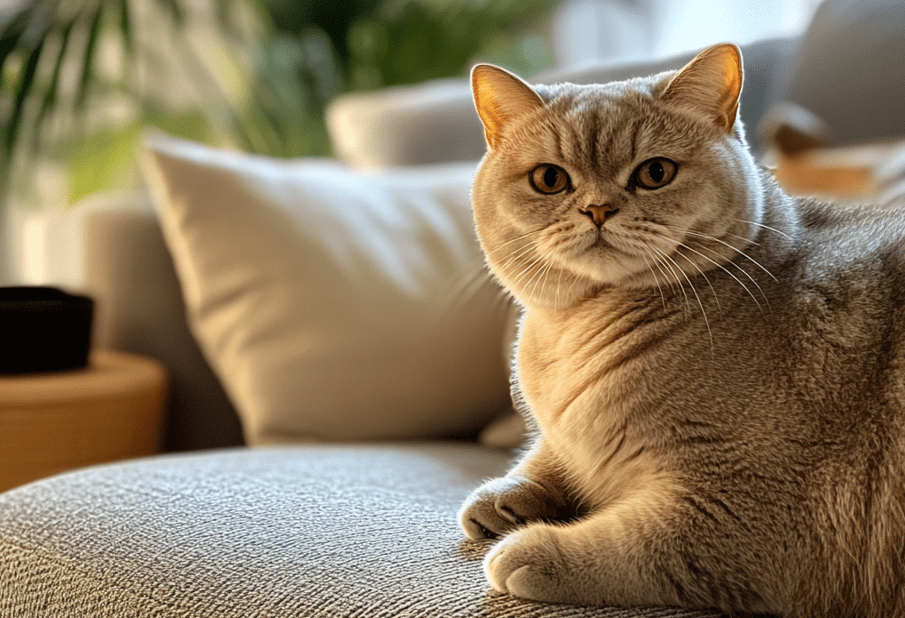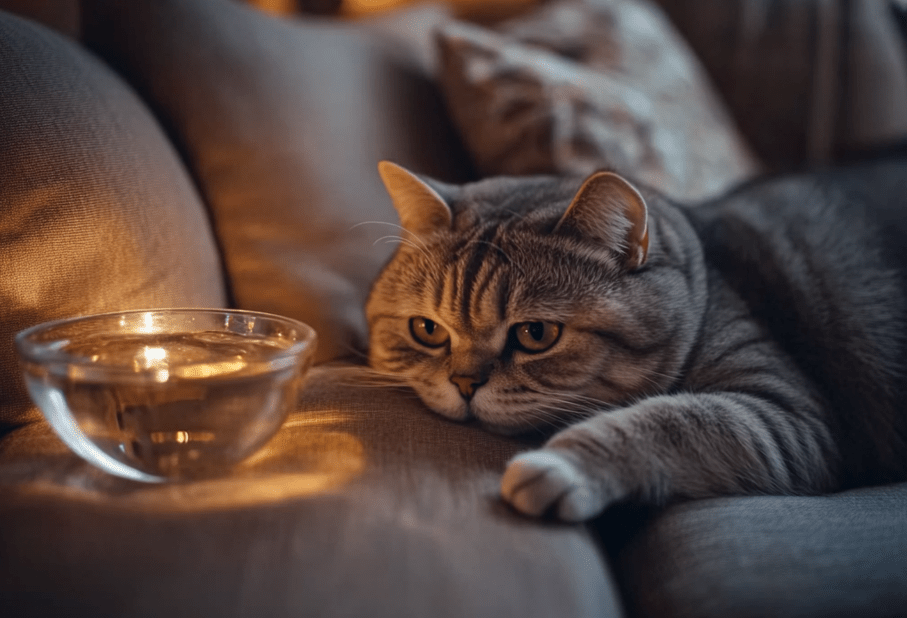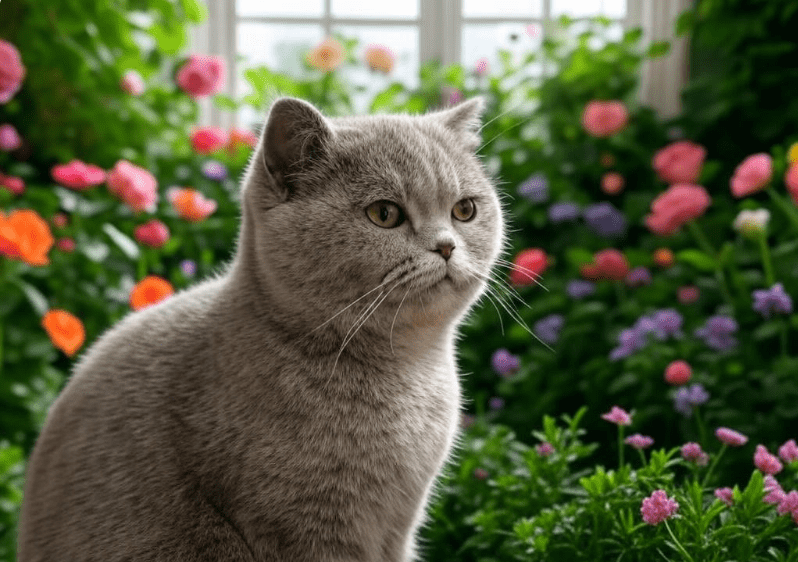
If you’ve noticed white flakes in your cat’s fur, you might be dealing with dandruff in British Shorthairs. This common issue can affect the sleek, dense coat of this beloved breed, leaving their fur looking dull and their skin irritated. British Shorthairs are known for their plush coats and calm demeanor, but dandruff can signal underlying health or grooming issues that need attention. In this comprehensive guide, we’ll explore the causes of dandruff in British Shorthairs, effective solutions to treat it, and preventative measures to keep your cat’s coat healthy and flake-free.
What is Dandruff in Cats?
Dandruff in cats, much like in humans, is the result of excessive skin cell turnover. Normally, cats shed dead skin cells as part of their natural cycle, but when this process speeds up, the dead cells clump together, forming visible white flakes. In British Shorthairs, dandruff often appears as small, dry flakes scattered throughout their coat, particularly on the back and base of the tail. It can also be accompanied by dry, itchy skin, which might lead your cat to scratch or over-groom, exacerbating the problem.
Why British Shorthairs Are Prone to Dandruff
British Shorthairs have a dense, double-layered coat that traps natural oils and moisture close to the skin. While this gives their fur a luxurious texture, it also makes them more susceptible to dandruff if their skin becomes too dry or if oils build up excessively. Their grooming habits—British Shorthairs are meticulous self-groomers—can sometimes contribute to the issue by spreading dandruff flakes throughout their coat. Additionally, environmental factors, diet, and health conditions can play a role in causing dandruff in this breed.
Common Causes of Dandruff in British Shorthairs
Understanding the root cause of dandruff is the first step to treating it effectively. Here are the most common reasons British Shorthairs develop dandruff:
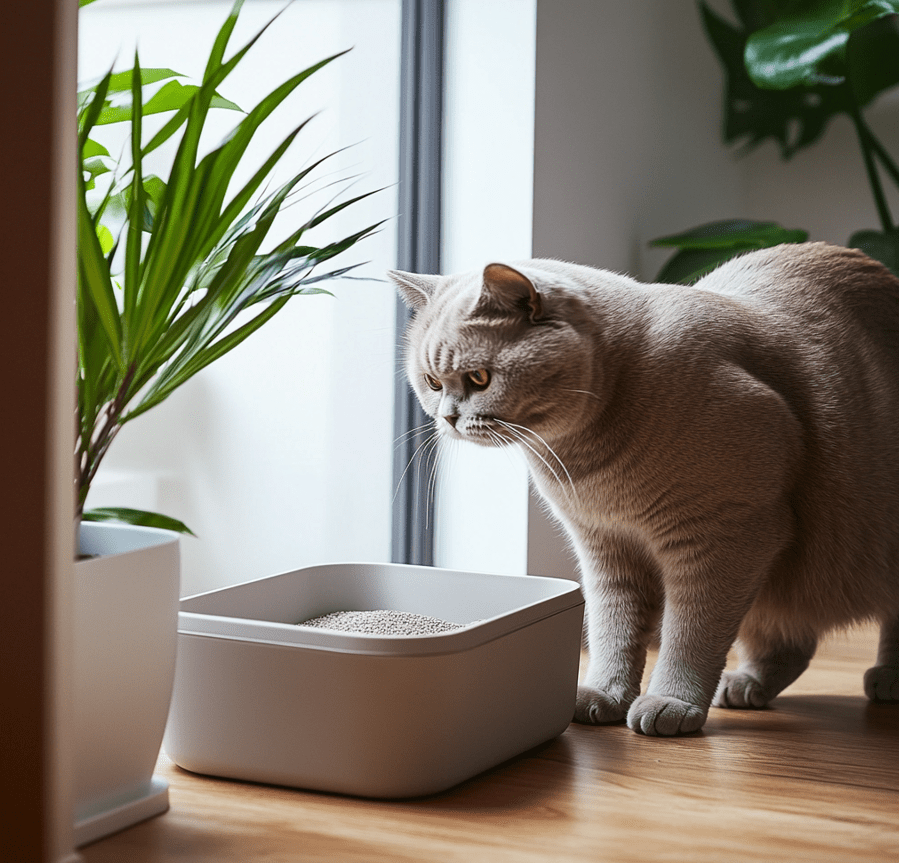
1. Dry Skin Due to Environmental Factors
Dry skin is one of the leading causes of dandruff in British Shorthairs. Low humidity, especially during winter months when indoor heating is common, can strip moisture from your cat’s skin, leading to flakiness. British Shorthairs living in arid climates or homes with poor humidity levels are particularly at risk. Over-bathing or using harsh shampoos can also dry out their skin, worsening the problem.
2. Poor Grooming Habits
While British Shorthairs are excellent self-groomers, they may not always distribute their natural oils evenly across their coat. If you’re not grooming your cat regularly, dead skin cells and loose hair can accumulate, leading to dandruff. Infrequent brushing can also cause oil buildup near the skin, which paradoxically leads to dryness in other areas of the coat.
3. Nutritional Deficiencies
A diet lacking essential fatty acids, such as omega-3 and omega-6, can contribute to dandruff in British Shorthairs. These nutrients are crucial for maintaining healthy skin and a shiny coat. If your cat’s diet is low in quality protein, vitamins like A and E, or minerals like zinc, their skin may become dry and flaky. Obesity, which is common in British Shorthairs due to their love of lounging, can also make it harder for them to groom hard-to-reach areas, leading to skin issues.
4. Allergies
Allergies—whether to food, environmental factors like pollen, or flea bites—can cause skin irritation and dandruff. British Shorthairs with sensitive skin may develop dandruff as a reaction to certain ingredients in their food (e.g., grains or artificial additives) or allergens in their environment, such as dust mites or mold. Flea allergy dermatitis is another common culprit, as even a single flea bite can trigger an allergic reaction in sensitive cats.
5. Underlying Health Conditions
Dandruff can sometimes be a symptom of an underlying health issue. Conditions like hypothyroidism, diabetes, or fungal infections (such as ringworm) can lead to skin problems, including dandruff. Parasites like mites can also cause flaky skin. If your British Shorthair’s dandruff is accompanied by other symptoms—such as excessive scratching, hair loss, or lethargy—it’s worth consulting a veterinarian to rule out medical causes.
6. Stress and Anxiety
Stress can manifest physically in cats, including through skin issues like dandruff. Changes in routine, a new pet in the household, or a move to a new home can cause anxiety in British Shorthairs, which may lead to over-grooming or skin irritation. Stress-induced dandruff is often accompanied by behavioral changes, such as hiding or reduced appetite.
How to Identify Dandruff in British Shorthairs
Dandruff is easy to spot if you know what to look for. Part your British Shorthair’s fur and check for white flakes on their skin or scattered throughout their coat. Unlike dirt, dandruff doesn’t brush off easily and may cling to the fur. You might also notice your cat scratching more than usual, or see redness or irritation on their skin. Dandruff is different from dander (normal skin shedding), which is finer and less noticeable. If the flakes are large, persistent, or accompanied by odor, it could indicate a more serious issue like a skin infection.
Solutions for Treating Dandruff in British Shorthairs
Once you’ve identified dandruff in your British Shorthair, it’s time to take action. Here are effective solutions to treat and manage the condition:
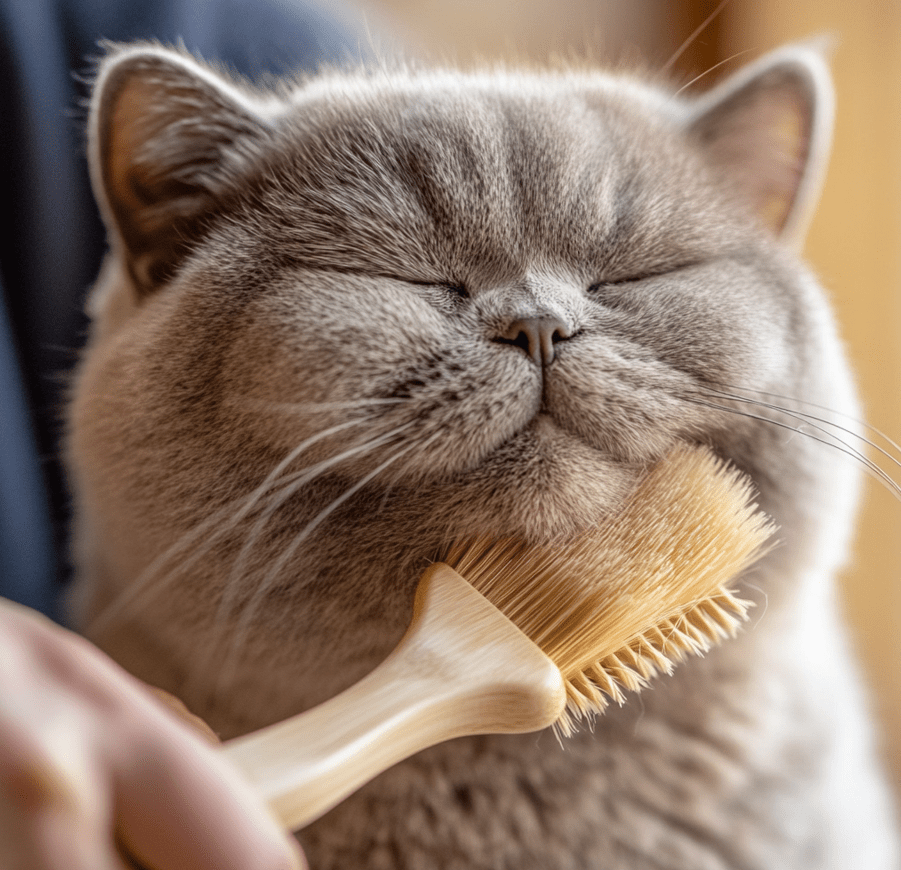
1. Improve Grooming Practices
Regular grooming is essential for managing dandruff in British Shorthairs. Brush your cat 1-2 times per week using a soft-bristled slicker brush or grooming glove to remove loose hair and dead skin cells. Focus on distributing their natural oils evenly across their coat by brushing in the direction of hair growth. Avoid over-brushing, as this can irritate their skin. During shedding seasons (spring and fall), you may need to brush more frequently to prevent buildup.
Tips for Effective Grooming:
-
Use a deshedding tool sparingly to avoid thinning their coat.
-
If your cat resists grooming, start with short sessions and use treats for positive reinforcement.
-
Clean grooming tools regularly to prevent spreading bacteria or oils.
2. Adjust Their Diet
A balanced diet can significantly reduce dandruff in British Shorthairs. Look for high-quality cat food that includes omega-3 and omega-6 fatty acids, which promote healthy skin and a shiny coat. Foods with salmon, fish oil, or flaxseed are excellent choices. Ensure the food is rich in protein and free from artificial additives or fillers that might trigger allergies. You can also add a vet-recommended supplement, such as a fish oil capsule, to their diet to boost their skin health.
Foods to Avoid:
-
Low-quality dry kibble with excessive grains.
-
Foods with artificial preservatives or colors.
-
Ingredients your cat may be allergic to, such as chicken or dairy (common allergens).
3. Use a Cat-Safe Moisturizing Shampoo
If your British Shorthair’s dandruff is caused by dry skin, a gentle, moisturizing shampoo can help. Look for a cat-specific shampoo with natural ingredients like oatmeal, aloe vera, or coconut oil, which soothe and hydrate the skin. Bathe your cat sparingly—once every 4-6 weeks at most—to avoid stripping their natural oils. Always rinse thoroughly to prevent residue buildup, and dry them completely with a soft towel to prevent chills.
Bathing Tips:
-
Use lukewarm water to avoid shocking their skin.
-
Never use human shampoos, as they can be too harsh for cats.
-
If your cat hates baths, try a waterless shampoo or grooming wipes instead.
4. Increase Humidity in Your Home
Low humidity can exacerbate dandruff in British Shorthairs. Use a humidifier in your home, especially during dry seasons, to maintain a humidity level of 40-60%. Place the humidifier in the room where your cat spends the most time, such as their favorite lounging spot. You can also place a bowl of water near heating sources to add moisture to the air. Keeping your cat hydrated by ensuring they have access to fresh water at all times also helps combat dry skin.
5. Address Allergies
If you suspect allergies are causing your British Shorthair’s dandruff, work with your veterinarian to identify the allergen. For food allergies, they may recommend an elimination diet to pinpoint the culprit. For environmental allergies, regular cleaning of your home—vacuuming, washing bedding, and reducing dust—can help. Flea prevention is also crucial; use a vet-recommended flea treatment year-round to prevent flea allergy dermatitis.
6. Consult a Veterinarian for Medical Issues
If dandruff persists despite your efforts, or if it’s accompanied by symptoms like hair loss, redness, or excessive scratching, consult a veterinarian. They can perform tests—such as skin scrapings or blood work—to diagnose underlying conditions like fungal infections, parasites, or hormonal imbalances. Depending on the diagnosis, they may prescribe medicated shampoos, topical treatments, or oral medications to treat the dandruff and its root cause.
Common Treatments:
-
Antifungal shampoos for ringworm.
-
Steroid creams for severe inflammation.
-
Antibiotics for bacterial skin infections.
7. Reduce Stress
If stress is contributing to your British Shorthair’s dandruff, take steps to create a calm environment. Provide them with a safe space where they can retreat, such as a cozy cat bed or a quiet room. Use pheromone diffusers like Feliway to reduce anxiety. Spend quality time with your cat through play or gentle petting to help them feel secure. If stress persists, a vet or feline behaviorist can offer additional strategies.
How to Prevent Dandruff in British Shorthairs
Prevention is key to keeping dandruff at bay. Here are proactive steps to ensure your British Shorthair’s skin and coat stay healthy:
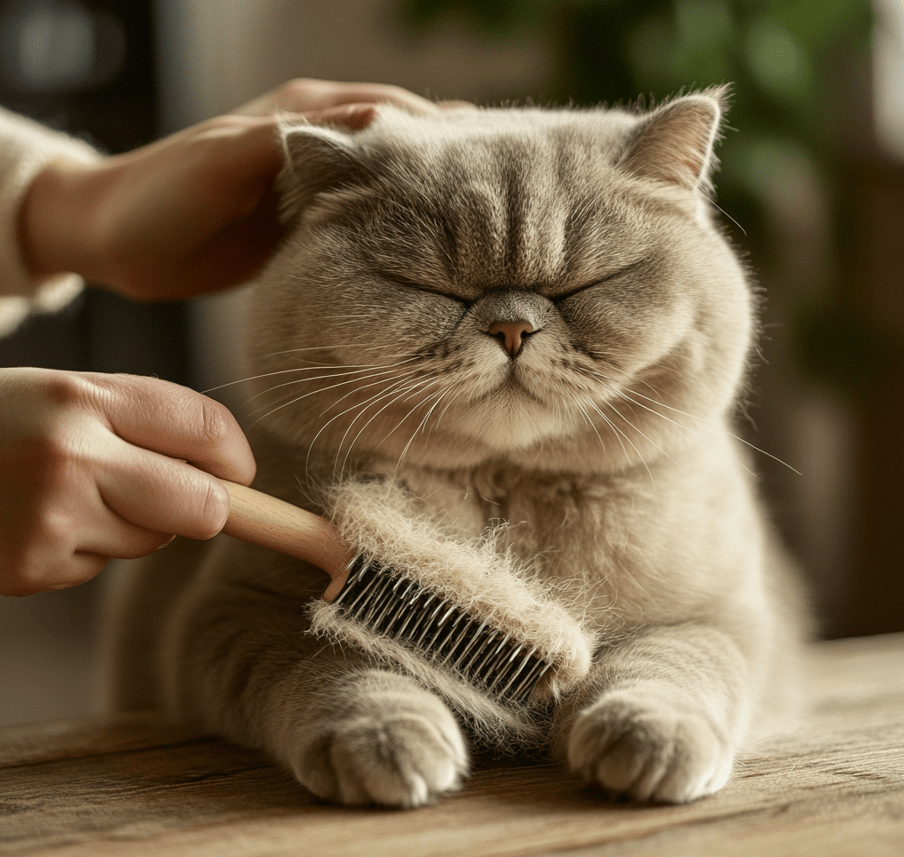
1. Maintain a Consistent Grooming Routine
Regular brushing prevents the buildup of dead skin cells and keeps your cat’s coat in top condition. Stick to a grooming schedule that works for your British Shorthair—typically 1-2 times per week—and adjust as needed during shedding seasons.
2. Feed a Nutrient-Rich Diet
A diet rich in essential fatty acids, vitamins, and minerals supports healthy skin. Choose a premium cat food tailored to your British Shorthair’s needs, and avoid sudden dietary changes, which can stress their system.
3. Keep Their Environment Clean
A clean living space reduces the risk of environmental allergies. Wash your cat’s bedding regularly, vacuum frequently, and keep their litter box clean. Avoid using strong chemical cleaners near your cat, as these can irritate their skin.
4. Monitor for Early Signs
Check your British Shorthair’s coat and skin weekly for early signs of dandruff, such as flakiness or dryness. Catching the problem early makes it easier to address before it becomes severe.
5. Schedule Regular Vet Checkups
Annual vet visits can help catch health issues that might lead to dandruff, such as thyroid problems or allergies. Regular checkups also ensure your cat’s overall health is on track.
When to Seek Professional Help
If your British Shorthair’s dandruff doesn’t improve after a few weeks of home care, or if you notice symptoms like open sores, hair loss, or a foul odor, it’s time to seek professional help. A veterinarian can provide a thorough examination and recommend targeted treatments. In some cases, a professional groomer may be needed to safely remove severe buildup or mats that are contributing to the problem.
Conclusion: Keeping Your British Shorthair’s Coat Dandruff-Free

Dandruff in British Shorthairs is a manageable condition with the right approach. By addressing the root causes—whether it’s dry skin, poor diet, allergies, or health issues—you can help your cat maintain a healthy, flake-free coat. Regular grooming, a balanced diet, and a clean environment are key to preventing dandruff and keeping your British Shorthair comfortable. With patience and care, you’ll not only treat their dandruff but also strengthen the bond you share through nurturing their well-being.
Take the time to understand your British Shorthair’s unique needs, and don’t hesitate to consult a vet if you’re unsure about the best course of action. A happy, healthy cat with a shiny coat is well worth the effort!

